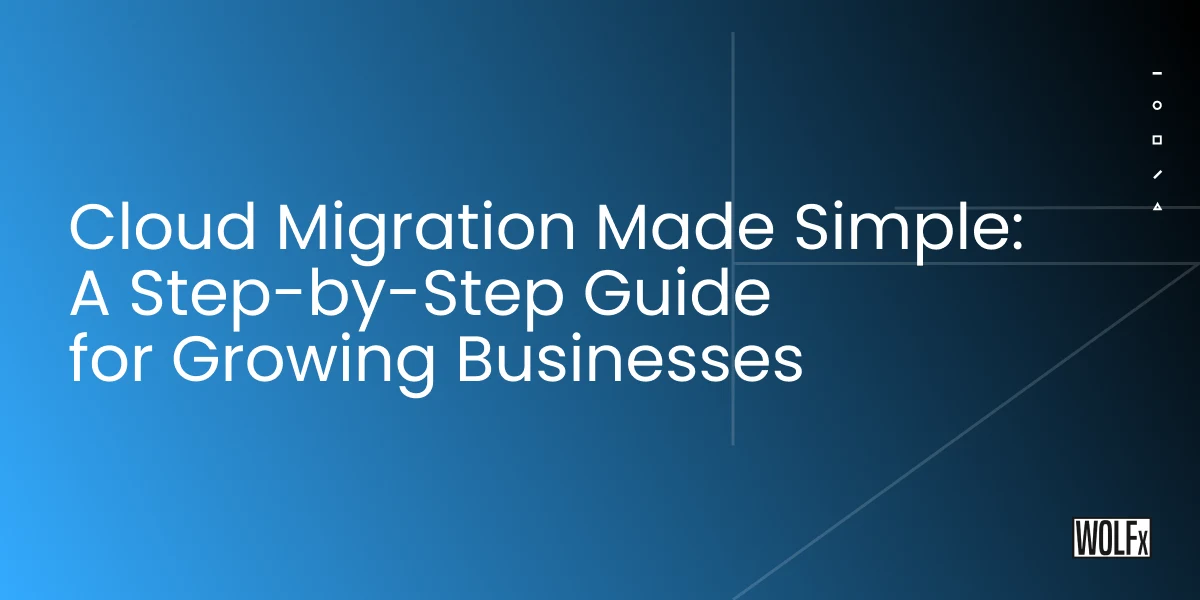Why Cloud Migration Matters for Growing Businesses
In today’s digital-first world, agility and scalability define a company’s success. Cloud migration is no longer optional, it’s a necessity for growing businesses that want to stay competitive, reduce costs, and innovate faster. Beyond just moving data, cloud migration enables organizations to embrace modern technologies, improve performance, and unlock new business models.
The benefits of cloud migration include reduced IT infrastructure costs, stronger data security, and access to advanced analytics. This guide breaks down the cloud migration strategy, solutions, and step-by-step process so that your business can transition smoothly.
Understanding Cloud Migration
Cloud migration refers to moving applications, data, and workloads from on-premises servers to cloud-based infrastructure. In many cases, the first step involves data migration to cloud shifting databases and storage systems securely to cloud environments.
While the rewards are clear, companies often face cloud migration challenges, such as downtime, application compatibility, and managing costs. Planning ahead with the right strategy ensures a smoother transition.
Types of Cloud Migration
When it comes to cloud adoption, there are several types of cloud migration businesses can choose from:
1. Lift and Shift (Rehosting) – Moving applications without modification.
2. Re-platforming – Making minor adjustments for better cloud optimization.
3. Re-architecting – Redesigning applications to take full advantage of the cloud.
4. Hybrid Approaches – Combining on-premises and cloud solutions for flexibility, often called hybrid cloud migration.
Building a Cloud Migration Strategy
Every successful move begins with a cloud migration strategy. This involves:
1. Conducting a cloud readiness assessment to understand current infrastructure and workloads.
2. Defining goals, such as cost reduction, performance improvement, or faster innovation.
3. Setting a roadmap with phases - pilot migration, testing, and optimization.
A well-defined strategy ensures you avoid unnecessary delays and reduce risks during the migration.
Exploring Cloud Migration Solutions
Businesses today can choose from a wide range of cloud migration solutions, including SaaS (Software as a Service), PaaS (Platform as a Service), and IaaS (Infrastructure as a Service). Many organizations partner with managed service providers to handle complex migrations.
The right solution balances cost, compliance, and scalability helping companies stay focused on growth while leveraging the cloud’s power.
Cloud Migration with AWS
One of the most popular options is cloud migration AWS. Amazon Web Services provides robust tools like AWS Migration Hub, Database Migration Service (DMS), and Snowball to make the process easier.
AWS’s global reach, strong ecosystem, and scalability make it a top choice for enterprises. However, businesses should evaluate AWS against other providers before making a final decision.
Hybrid & Multi-Cloud Approaches
For companies that want flexibility, adopting a hybrid cloud example where some workloads stay on-premises while others move to the cloud, can be the right choice.
It’s also essential to compare hybrid cloud vs multi cloud:
1. Hybrid Cloud: Mix of private and public cloud.
2. Multi-Cloud: Using multiple cloud providers to avoid vendor lock-in.
These models offer resilience, compliance benefits, and scalability.
Cloud Provider Comparison
Choosing the right provider is a critical step. A cloud provider comparison between AWS, Microsoft Azure, Google Cloud, and Oracle often reveals key differences:
1. AWS: Wide service range, best for global enterprises.
2. Azure: Seamless integration with Microsoft tools.
3. Google Cloud: Advanced AI/ML capabilities.
4. Oracle Cloud: Strong for database-heavy workloads.
When evaluating providers, consider cloud migration cost, available tools, and long-term business needs.
Cloud Migration for Small Business
Small and medium-sized businesses may assume cloud migration is only for large enterprises, but that’s not true. Cloud migration for small businesses enables affordability, security, and innovation without the burden of heavy IT infrastructure.
SMBs can start small, moving only essential workloads first, and scale as their business grows.
Step-by-Step Guide to Cloud Migration
Here’s a practical, simplified roadmap:
1. Assess readiness with a cloud readiness assessment.
2. Define goals with a solid cloud migration strategy.
3. Choose type of migration (types of cloud migration: lift-and-shift, re-platforming, etc.).
4. Select provider through a cloud provider comparison.
5. Run a pilot migration to test workloads.
6. Optimize & monitor for performance, cost, and compliance.
Benefits of Cloud Migration Revisited
The benefits of cloud migration go far beyond cost savings:
- Increased scalability to handle growth.
- Access to cutting-edge cloud services like AI and analytics.
- Better disaster recovery and business continuity.
- Improved performance and customer experience.
When executed correctly, cloud migration benefits far outweigh the challenges.
Conclusion
Migrating to the cloud doesn’t need to be overwhelming. With the right cloud migration strategy, businesses can reduce risks, control cloud migration cost, and leverage the full power of cloud computing.
For growing businesses, this is the moment to act. The future of digital transformation belongs to companies that adopt cloud migration solutions and use them to innovate, scale, and thrive.

